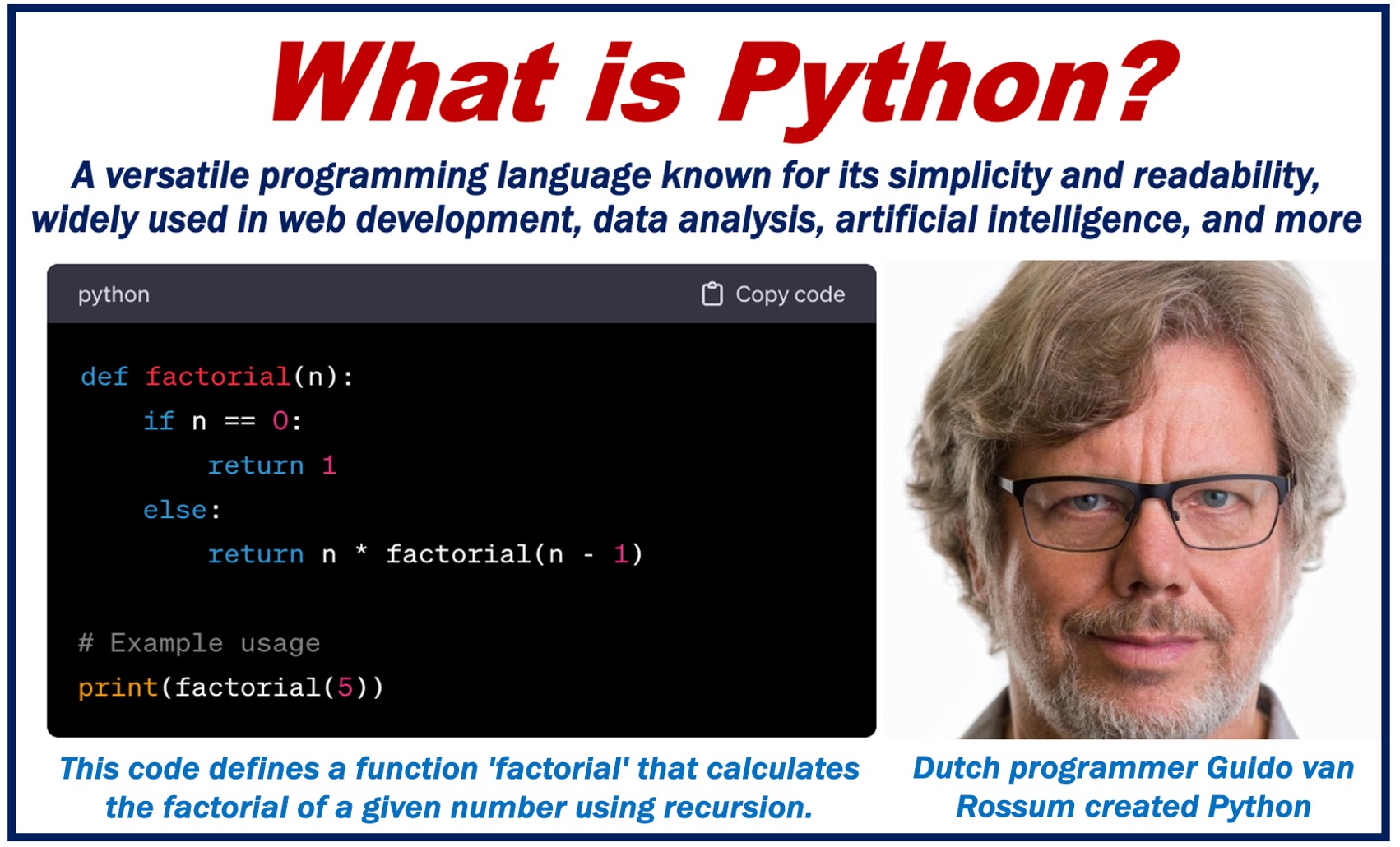Python is a programming language known for being easy to learn and for its clear syntax. Originally developed by Guido van Rossum and first released in 1991, Python places an emphasis on flexibility and simplicity, allowing programmers to express ideas in fewer lines of code than languages like Java or C++.
“Python, general-purpose high-level computer programming language valued for its English-like syntax and powerful built-in data analysis and data science functions and libraries.”
Key features of Python
The following are some of the key features of Python:
-
Easy to learn and use
Python’s syntax is straightforward, which makes it accessible to beginners.
-
Interpreted language
Debugging is made easier by the line-by-line execution of the code.
-
Highly versatile
It is used in many different fields such as web development, data analysis, artificial intelligence, scientific computing, and more.
-
Extensive libraries
There is a huge collection of frameworks and libraries that increase its functionality.
-
Cross-platform compatibility
Python is able to run on many operating systems, like Linux, macOS, and Windows.
-
Object oriented
It supports object-oriented programming (OOP) for structuring programs.

Applications of Python
“Below are some examples illustrating how an individual might utilize Python:
-
Web development
Complex websites and web apps can be developed with frameworks like Flask and Django.
-
Data science and analytics
Python libraries like Pandas and NumPy, which have become popular in data analysis, make data manipulation and analysis simpler.
-
Artificial intelligence and machine learning
Python is the preferred language for AI and ML projects due to its extensive libraries, such as Scikit-learn and TensorFlow, which provide powerful tools and frameworks for these domains.
-
Automation and scripting
Ideal for automating repetitive tasks and scripting to boost productivity.
-
Scientific and numeric computing
Its robust scientific and numerical libraries make it a valuable tool in the fields of scientific computing and research.
Benefits in using Python
There are many benefits to using Python, including:
-
Community support
It boasts a large and active community, providing valuable support and resources when needed.
-
Productivity and speed
Its simplicity accelerates application development, enhancing productivity.
-
Scalability
It is suitable for small projects as well as large enterprise solutions.
How long does it take to learn? According to dataquest.io:
“If you’re looking for a general answer, here it is: If you just want to learn the Python basics, it may only take a few weeks. However, if you’re pursuing a data science career from the beginning, you can expect it to take four to twelve months to learn enough advanced Python to be job-ready.”
Challenges in using Python
While it offers numerous benefits, it also presents several challenges, such as:
-
Performance Limitations
Being an interpreted language, Python often cannot match the speed of compiled languages such as C or C++.
-
Mobile development
It has limited capabilities in mobile application development compared to other languages specialized in this area.
Video – What is Code?
This video presentation, from our YouTube partner channel – Marketing Business Network, explains what a ‘Code’ is using simple and easy-to-understand language and examples.
Written by Nicolas Perez Diaz
